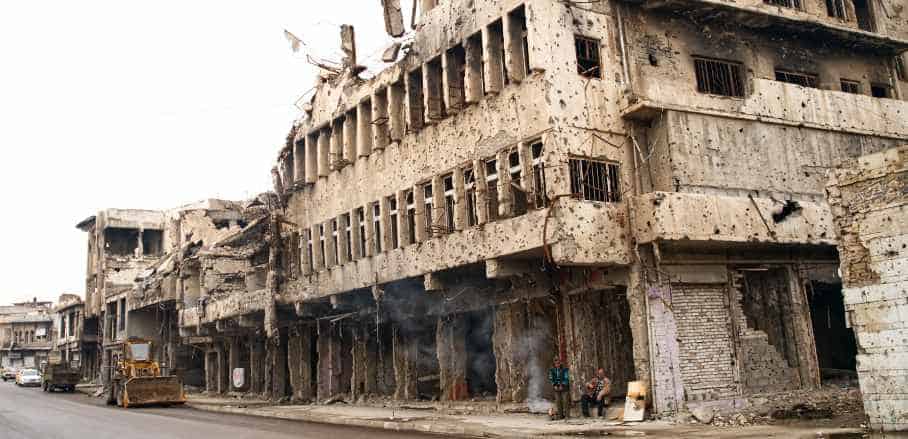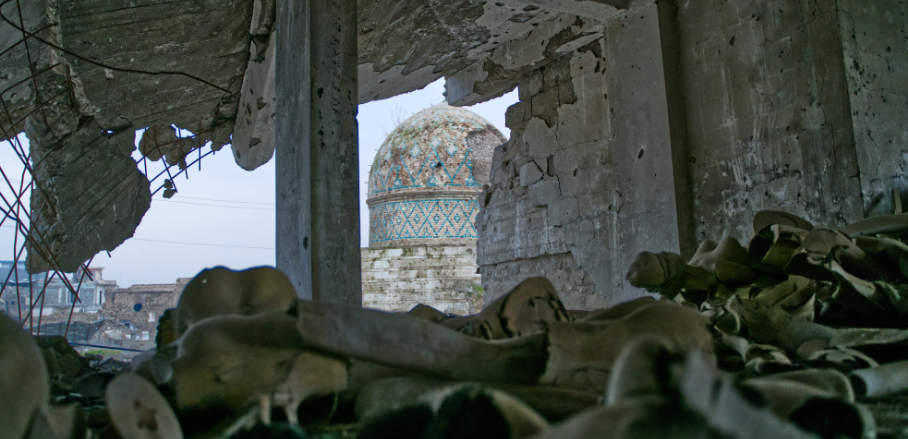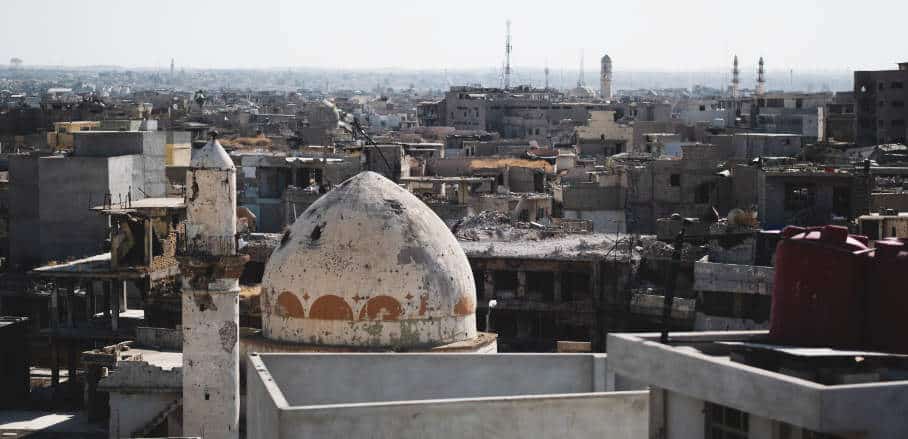Post-Conflict Reconstruction in Mosul: Navigating Challenges and Embracing Lessons in Rebuilding a City
Mosul, once celebrated as Iraq’s cultural and religious heart, faced significant devastation during the occupation by the militant group ISIS and the subsequent battle for liberation. Six years later, ancient landmarks and critical infrastructure are gradually being reconstructed.
Iraq’s second-largest city – nicknamed “the mother of two springs” due to its delightful autumn and spring climate – used to serve as the nation’s hub of diverse cultures and religions. Enclosing ruins of the ancient Assyrian city of Nineveh – once the largest city in the world – on its east side, for centuries the built landscape of Mosul has been characterised by elements of both Islamic and Christian architecture. Its strategic position along the river Tigris amplified its significance, driving economic and agricultural growth in the area.
It was precisely the city’s architectural and cultural heritage as well as the overall significance Mosul held to Iraq, that made it a target for the militant terrorist group ISIS.
The Devastating Fall of an Ancient City
When ISIS seized control of Mosul the militant group transformed the prominent Iraqi city into its main base. ISIS exploited the political destabilisation triggered by the US invasion and prolonged occupation of Iraq coupled with escalating sectarian tensions within the country and the Iraqi military’s weakened resistance. In June 2014, the ancient Mesopotamian city fell to ISIS, unleashing the most devastating and destructive period experienced in modern times by Mosul and its inhabitants.

Remains of ISIS’ attacks in Mosul 2019 © Enno Lenze
While ISIS was in control, the group focused on and damaged specific well-known and religiously important structures. Notable structures that suffered severe damage include the historic Al-Nuri Mosque, known for its leaning minaret, and the Mosul Museum, which housed invaluable artefacts from Mesopotamian civilisations. The city’s infrastructure and other vital facilities like hospitals, schools, and power grids were also strategically targeted – naturally leading to a deterioration in essential services.
In July 2017, Mosul was finally liberated after three years of ISIS occupation. The campaign to recapture Mosul from ISIS, led by Iraqi forces and supported by an international coalition, took nine long months – the gruelling urban battle to do so resulted in further destruction of the city on a massive scale.
According to reports from the United Nations Office for Coordination of Humanitarian Affairs, the conflicts led to the devastation of approximately 65 percent of Mosul’s historic district with more than 138,000 homes being damaged or demolished. This widespread destruction left Mosul’s urban landscape in a state of ruins, not only erasing its ancient fabric but also resulting in the displacement of thousands of its residents. What remained were considerable challenges to post-conflict reconstruction efforts.
Rebuilding Post-Conflict Cities: Essential First Steps to Recovery
After driving out the terrorist group, the extent of devastation in Mosul came into international focus. The task at hand was staggering: It required an in-depth assessment of the extensive damage, followed by a comprehensive reconstruction plan. The revival of vital services such as water, electricity, and accessible healthcare were immediate priorities. The Iraqi government recognised the need to seek international support and intervention to initiate the task of rebuilding.
Consequently, a three-day conference in Kuwait deliberated on Iraq’s reconstruction just six months after the liberation of Mosul in February 2018. The international community made a collective commitment to rally support for the rehabilitation of the nation’s infrastructure, while United Nations Educational, Scientific and Cultural Organization (UNESCO) launched the flagship initiative Revive the Spirit of Mosul. The campaign stands out as the organisation’s most ambitious revitalisation effort in recent years. Central to its mission is the restoration of Mosul’s historic Old City.

Mosul Mosque 2019 © Enno Lenze
Confronting the dual challenge of swift reconstruction and the preservation of historical elements within the Old City, UNESCO embarked on various projects with the support of local NGOs and Mosul’s community. They commenced the restoration of the iconic Al-Nouri Mosque, with its nearly 850-year-long history, alongside initiatives involving the Notre-Dame de l’Heure Convent, Al Tahera Church, educational institutions, and a significant array of heritage houses. Since its inception, the initiative has achieved remarkable success, instilling hope and fostering resilience among the residents of Mosul. Recently, UNESCO officially handed over Heritage House No. 100 to its owner, and with it, marked an 80 per cent completion of the restoration efforts of the 124 houses in the historic district of Mosul.
Sustainability and Integration at the Centre of Reconstruction Efforts
Within the rich cultural and historically diverse context of Mosul, reconstruction demands a personalised and sustainable approach to guarantee its long-term viability. The organisation Mosul Heritage is a local NGO that aims to address this matter while simultaneously responding to UNESCO’s initiative Revive the Spirit of Mosul. By meticulously documenting both the physical and cultural heritage of Mosul’s Old City, the NGO actively contributes to its preservation.
This collaborative effort involves working closely with local communities to capture memories of the urban landscape while simultaneously recording endangered cultural elements like construction techniques and crafting methods. To make this knowledge accessible, the organisation conducts workshops focused on teaching preservation and conservation techniques, which are crucial for the reconstruction of the historic city. The students trained during those workshops, can then proactively participate in fieldwork to restore what was destroyed. By establishing this sustainable cycle, the initiative functions as a pivotal link to the governmental bodies overseeing the reconstruction of Mosul, while positioning the community at the core of all preservation efforts.
The destruction caused by the conflict in Mosul goes beyond mere physical damage and entails significant losses that transcend the material aspects. Mosul’s heritage not only safeguards the physical and cultural legacy of the city but also sets an example for approaching the difficult task of rebuilding reasonably. By highlighting Mosul’s history and urban identity – the very things ISIS attempted to erase during its occupation – while also empowering its residents with preservation knowledge, the initiative cultivates resilience among the people of Mosul. Hence, it can become a model for sustainable and inclusive post-conflict reconstruction for cities in the entire region.
